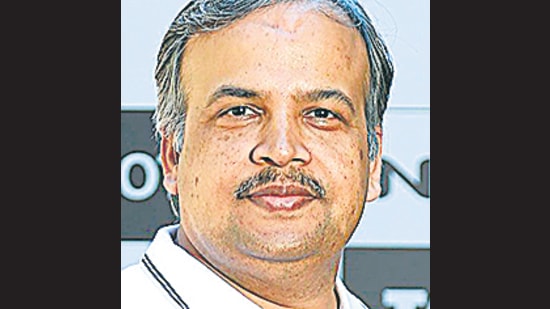A slow-burning shift has begun. Electric vehicles are on the streets, in drawing-room conversations, and in maps and charts about the future of public and private transport.
Their allure is clear. They don’t pollute. The climate crisis has become a key factor in the purchase process. And electricity costs less than fuel (and fuel seems to cost more every month).
Depending on state policy, buyers can also get tax benefits and subsidies on EVs. Amid growing interest and the government sops, the auto industry has responded too. From Tata Motors to Mahindra, Hyundai to Audi, there are many new EV models in the works. And newer brands are catering to this market as well, including MG Motors, Boom Motors, Okinawa, Ather and Ola Electric.
“In the automotive industry, the growth of any segment is generally seen to be directly proportional to the number of new models released. In the EV space, multiple new-age and traditional manufacturers are increasingly launching new models driving higher adoption,” says Praneet Gupta, partner at management consultancy Bain & Company.
Buyers can currently choose between 12 electric car models in India, including the Tata Nexon EV, Hyundai Kona, Audi e-tron, Jaguar I-Pace and a range of Mercedes Benz EQ sedans and SUVs. There will soon be a lot more options. Mahindra has plans to launch as many as 16 electric vehicles by 2027. Skoda plans to launch its premium Enyaq iV in India in 2022. BMW is lining up its iX electric SUV for India.
BOOTING UP
Making the vehicles, of course, is just the first step. There’s the question of where to charge them, how to service them, what it will take to replace a battery if needed, and for users, there’s navigating all this as well as learning how far it can take them and how many charging points they can expect along the way.
Start with the basics: What is an EV? First, what it is not is a hybrid vehicle. An electric vehicle runs only on electricity, and has no internal combustion engine (ICE). It has batteries powering a motor, which gets the wheels moving.
From the outside, an EV need not look any different from an ICE vehicle. Though it can, as with the luscious Heritage Series Grandeur retro Hyundai EV with its sleek black lines, paired with glowing touch-screen dashboard. The two-wheeled EVs do tend to look distinctly different, lighter, sleeker, silent, and something like a cross between a bicycle and a scooty.
In terms of operating costs, an EV car or SUV costs about a rupee per kilometre to run, which users say feels like a minor miracle against the average ₹6.6 it costs to run an SUV on petrol.
One of the big early concerns — how far an EV can run once fully charged — is dissipating as EV batteries improve. The Hyundai Kona, for instance, has a 39.2 kWh (kilowatt-hour) battery and an estimated range of 452 km once fully charged. The Tata Nexon has a 30.2 kWh battery with an estimated range of 312 km. The MG ZS EV has the largest battery currently available in India in the segment of EVs priced at less than ₹25 lakh, a 44.5 kWh battery with an estimated range of 419 km.
All four-wheeled EVs currently come with a charging point that is installed by the manufacturer near the vehicle’s parking spot (housing society permission is required where applicable). Most two-wheeled EVs have detachable batteries that can be plugged in at home, using any 15-amp socket (the kind used for an air-conditioner).
CHARGING POINTS
There are four factors that remain concerns for potential EV buyers: The initial cost (EVs are considerably more expensive than ICE vehicles, because all the batteries are imported); the scarcity of charging points; the time it takes to charge an EV (at least eight hours with a regular, non-high-speed charger such as the ones bundled by most manufacturers with each purchase); and concerns over the life of the battery itself (replacing an EV battery can cost about 50% of the original cost of the car itself).
If an EV user doesn’t want to spend 8 to 18 hours charging the vehicle’s battery, they must buy a high-speed charger, or find one at a public bunk near them (these can do the job in about 45 minutes). Much like how you can buy third-party fast chargers for your phones and laptops, there are faster chargers available for EVs as well. The EO Mini Pro 2 charger, made by the UK-Based EO Charging, is the world’s smallest EV smart charger and isn’t much larger than an Apple iPad Mini (175 mm x 125 mm x 125 mm in footprint). This is half the size of the chargers that EV makers bundle with the new EV that you’ll buy. This costs around ₹87,785 including installation.
Either way, to go beyond a single-charge range takes careful planning. Charging stations are few and far between on the roads; there are currently only 1,800 operational across India.
The governments, central and states, have plans to incentivise EVs further, and add more charging stations. For now, a joint initiative by the Government of India’s NITI Aayog and the UK Government has resulted in a website called e-AMRIT (e-amrit.niti.gov.in) that helps those still on the fence calculate how much they might pay for electricity to charge their EV; and what they’d likely pay in taxes and registration fees in different states. It also maps existing charging stations and government benefits available to EV owners.
It can confirm, for instance, that in Delhi buyers will pay ₹4.5 per kWh to charge their EV, while this is about ₹4.05 per kWh in Maharashtra and about ₹5.9 per kWh in Uttar Pradesh.
Depending on where you are, expect to see a lot more EVs on the streets. Data from the think tank Council on Energy, Environment and Water (CEEW) suggests that, as of end-October, 63 EVs were sold per 1,000 ICE vehicles in Delhi; 53 per 1,000 in Tripura; and 32 per 1,000 in Karnataka and Assam. In all, the data showed, 1.21 lakh EVs were registered across the country since April 1. Nearly half of these were registered in just three states: Uttar Pradesh, Karnataka and Tamil Nadu.
.
VOICES FROM THE GROUND

Nitin Gadkari, union minister for road transport and highways, at a webinar organised by The Sustainability Foundation, Denmark, in November 2021
“Within two years, the cost of EVs will come down to a level that will be at par with their petrol variants. Already GST is only 5% on EVs and the cost of lithium-ion batteries is declining. Besides, the government has already framed a policy allowing petrol pumps to set up EV charging stations.”
.
.

Pratik Kamdar, co-founder of Neuron Energy, which manufactures batteries for two-wheeled EVs
“With the government’s commitment towards making EV battery manufacturing self-reliant in India, the environment is vibrant to maximise intelligent manufacturing capabilities and focus on tech innovations to make the country EV-prosperous in the next five to seven years.”
.
.

Anand Kulkarni, vice-president and product line head for passenger EVs at Tata Motors
“The Indian BEV (battery electric vehicle) market is on an exponential growth path. It is being shaped by a series of favourable factors such as a positive word-of-mouth from existing customers, policy push, increases in petrol and diesel prices and an expected reduction in the battery cost.”
.
.

Hemang Shah, India head for the UK-based EO Charging, makers of portable EV chargers
“If you note the data from around the world, there has been a gradual development in the growth of EV in the last few years. Then you see a sudden spike like in India. It has been an eight-fold (growth) in 12 months. What is called the curve looks like a straight line or nearly right angle.”
.
.

Anirudh Ravi Narayanan, co-founder and CEO of EV maker Boom Motors
“An average petrol bunk takes two to four minutes to fill. An average EV, even with fast charging, requires at least 30 minutes. We don’t feel the problems now when we are at < 1% adoption, but we’ll start feeling them soon.”
.
.

Praneet Gupta, partner at management consultancy Bain & Company
“In India the best warranties being offered on EV battery life extend to 8 years / 160,000 km. This is close to the warranties being offered globally by players like Tesla.”
.
.

Ammar Sulia, an entrepreneur who bought an MG ZS EV for ₹21 lakh a year ago
“The thing that concerns me is that there is little clarity on battery replacement. From what I understand, the battery cost is half the price of the car.”
Enjoy unlimited digital access with HT Premium
Subscribe Now to continue reading

Stay connected with us on social media platform for instant update click here to join our Twitter, & Facebook
We are now on Telegram. Click here to join our channel (@TechiUpdate) and stay updated with the latest Technology headlines.
For all the latest Art-Culture News Click Here

